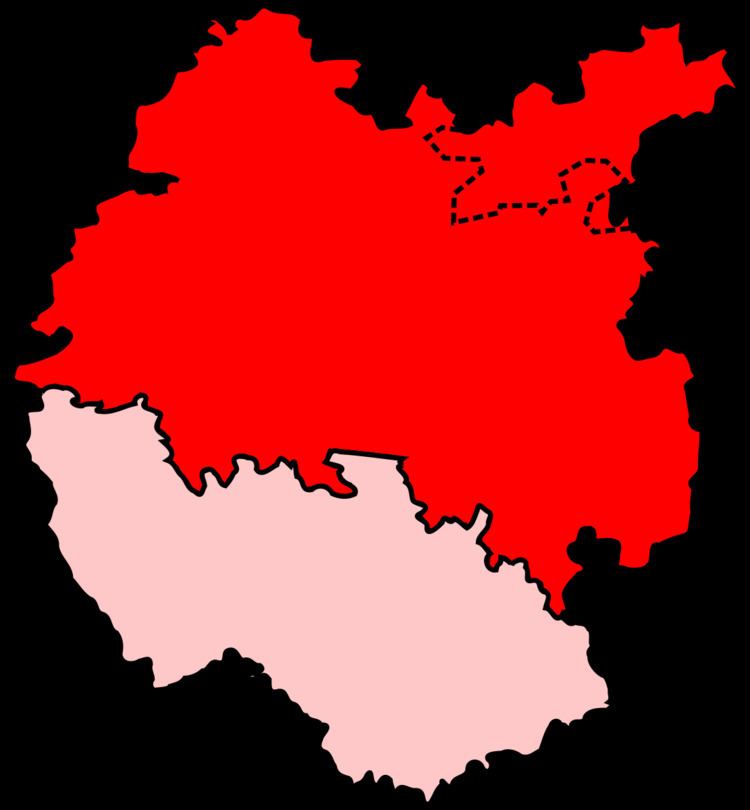Type of constituency Borough constituency | Number of members One | |
 | ||
Number of members 1295–1868: Two1868–1885: One | ||
Leominster was a parliamentary constituency represented until 1707 in the House of Commons of England, then until 1801 in that of Great Britain, and finally until 2010, when it disappeared in boundary changes, in the Parliament of the United Kingdom.
Contents
From 1295 to 1885, Leominster was a parliamentary borough which until 1868 elected two Members of Parliament by the bloc vote system of election. Under the Reform Act 1867 its representation was reduced to one Member, elected by the first past the post system. The parliamentary borough was abolished under the Redistribution of Seats Act 1885, and the name was transferred to a new county constituency.
Abolition
Following the review by the Boundary Commission for England of parliamentary representation in Herefordshire, no longer connected for such reasons with Worcestershire, two parliamentary constituencies have been allocated to the county. Most of the Leominster seat has been replaced by the North Herefordshire seat, while the remainder of the county is covered by the Hereford and South Herefordshire seat.
Boundaries
1885-1918: The Municipal Borough of Leominster, and the Sessional Divisions of Bredwardine, Bromyard, Kingston, Leominster, Weobley, and Wigmore.
1918-1950: The Municipal Borough of Leominster, the Urban Districts of Bromyard and Kington, the Rural Districts of Bredwardine, Bromyard, Kington, Leominster, Weobley, and Wigmore, and parts of the Rural Districts of Hereford and Ledbury.
1950-1974: The Municipal Borough of Leominster, the Urban Districts of Bromyard, Kington, and Ledbury, the Rural Districts of Bromyard, Kington, Ledbury, Leominster, and Weobley and Wigmore, and part of the Rural District of Hereford.
1974-1983: The Municipal Borough of Leominster, the Urban District of Kington, the Rural Districts of Bromyard, Kington, Ledbury, Leominster, and Weobley and Wigmore, and part of the Rural District of Hereford.
1983-1997: The District of Leominster, the District of Malvern Hills wards of Baldwin, Bringsty, Broadheath, Bromyard, Butterley, Cradley, Frome, Frome Vale, Hallow, Hegdon, Hope End, Laugherne Hill, Leadon Vale, Ledbury, Leigh and Bransford, Marcle Ridge, Martley, Temeside, and Woodbury, and the District of South Herefordshire wards of Burghill, Burmarsh, Dinmore Hill, Hagley, Magna, Munstone, Swainshill, and Thinghill.
1997-2010: The District of Leominster, the District of Malvern Hills wards of Bringsty, Bromyard, Butterley, Cradley, Frome, Frome Vale, Hegdon, Hope End, Leadon Vale, Ledbury, and Marcle Ridge, the District of South Herefordshire wards of Backbury, Burghill, Burmarsh, Credenhill, Dinmore Hill, Hagley, Munstone, Swainshill, and Thinghill, and the District of Wyre Forest ward of Rock and Ribbesford.
In its final form, the constituency consisted of northern Herefordshire and a small part of north-west Worcestershire, the boundaries having been specified when the two were joined as the single county of Hereford and Worcester. In Herefordshire it included the towns of Bromyard, Kington and Ledbury as well as Leominster, while the largest settlement of Worcestershire it included was Tenbury Wells.
Elections in the 1910s
Leominster by-election, 1912
Elections in the 1940s
General Election 1939/40
Another General Election was required to take place before the end of 1940. The political parties had been making preparations for an election to take place from 1939 and by the end of this year, the following candidates had been selected;
